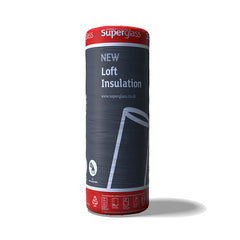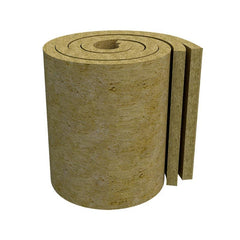
Did you know around 25% of heat generated by a home is lost through the roof? Now more than ever, people are exploring more cost-effective and energy efficient ways to keep their homes warmer for longer, and loft insulation may very well be the answer.
What is Loft Insulation and How Does it Work?
Loft insulation is a collection of materials, usually made of fibreglass or mineral wool, that are used to insulate the interior space between the roof and ceiling of residential or commercial buildings. Its purpose is to maintain comfortable temperature levels while reducing both energy consumption and energy costs. It works by trapping air pockets in between its fibres, which acts as an effective barrier to prevent the transfer of heat from one side to the other.
Loft insulation is a relatively easy DIY job, so even if you have little to no DIY experience, insulating your loft is a very simple procedure with a very big payoff. Loft insulation offers many practical benefits, including:
- Improved energy efficiency
- Improved soundproofing
- Increased comfort
- Reduced energy bills
- Reduced environmental impact
How Do I Know What Loft Insulation I Need?
There are many loft insulating materials available on the market, so it’s important to choose the one that is best suited to you and your needs. Deciding whether you will be insulating the joists or the rafters is the first call to action. This will have a huge impact on your material choices, as joists and rafters require different insulation options.
Insulation for Loft Joists
If you’re looking for insulation for loft joists for a cold roof, there are many materials suitable for this type of insulation, but loft rolls reign supreme. Loft roll, like our ROCKWOOL TwinRoll, enables quick and easy installation and is incredibly multi-faceted as it also offers acoustic and fire-resistant properties.
We also offer Superglass Multi Roll 44 for loft insulation which also offers a high level of thermal insulation, preventing heat from escaping out of your roof and keeping your home warmer for longer.
Insulation for Loft Rafters
Insulating loft rafters is a little trickier. If you’re looking for insulation for loft rafters for a warm roof, insulation boards such as our Xtratherm PIR are an ideal choice. Highly safe to use and incredibly energy efficient, these PIR boards are also very easy to handle and install, making them the perfect choice for DIY’ers wanting to insulate their loft rafters.
What About Insulation Depth?
While the government recommendation for minimum insulation depth is 270mm, many new builds are choosing to exceed this, going up to an insulation depth of 300mm. Bear in mind that if you choose to exceed the 270mm minimum recommendation, you may lose some space. However, if you find the area to be particularly cold, this loss of space may be a fair trade for a much warmer temperature.
What Are the Different Kinds of Loft Roll Material?
Loft rolls are available in a number of different materials: Sheep’s wool, mineral wool, and glass wool. Read on for a breakdown of each material.
Mineral wool:
Mineral wool is made from molten rock, such as basalt, which is melted down and spun into fibres that are then used to make batt insulation. This type of insulation, like our ROCKWOOL TwinRoll and RWA45, provides superior thermal protection, soundproofing, fire resistance, and moisture control. Mineral wool requires careful handling, as it can irritate bare skin.
Sheep’s wool:
Sheep’s wool insulation is similar in composition to mineral wool but has natural oils within the fibres that provide superior fire resistance and an increased level of acoustic performance without compromising thermal performance. However, sheep’s wool is often more expensive than other loft roll materials, and you may need to install more of it to reach the same insulation level that other materials offer.
Glass wool:
Glass wool is also made from molten materials, such as recycled glass, that are spun into a fibre form similar to mineral and sheep’s wool, but with added levels of moisture resistance due to its greater density. This type of insulation, like our Superglass Handy Pack 044 and Superglass Multi Roll 44, has superior levels of thermal performance while providing better soundproofing than other types of insulation. Similar to mineral wool, glass wool can irritate bare skin and is not suitable for use in damp areas as moisture reduces its insulating performance.
You can find an easy-to-read step-by-step guide on installing loft insulation here.
For more information on loft insulation and suitable materials, get in touch with our specialised team for expert assistance.
DISCLAIMER: The contents of this guide are intended for information purposes only. Insulation king shall not be liable, answerable or accountable for any loss or damage resulting from the advice given

